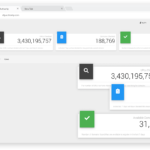Are you feeling overwhelmed by the weight of your student loans? Don’t worry, you’re not alone. Many graduates find themselves in a similar situation, unsure of how to tackle this financial burden. But fear not, because in this article, we’ll provide you with some helpful tips and strategies on how to effectively repay your student loans. So sit back, relax, and let’s get started on your journey towards financial freedom.

This image is property of images.unsplash.com.
Finding the Right Repayment Plan
It’s crucial to find the right repayment plan for your student loans to ensure that you are managing your debt effectively. There are different options available, and understanding them is the first step towards finding the best solution for you.
Understanding Different Repayment Options
There are various repayment options for student loans, such as income-driven repayment plans, standard repayment plans, and graduated repayment plans. Income-driven repayment plans adjust your monthly payments based on your income and family size, making them ideal for individuals with lower incomes. Standard repayment plans divide your loan amount into equal monthly payments over a fixed period, typically ten years. Graduated repayment plans start with lower payments that gradually increase over time.
Evaluating Income-Driven Repayment Plans
If you have a low income compared to your loan amount, an income-driven repayment plan might be the right choice for you. These plans consider your income, family size, and other factors to calculate your monthly payment. They typically cap your payment at a percentage of your discretionary income. The downside is that you may pay more interest in the long run, so it’s essential to evaluate the overall cost before deciding on this option.
Considering Standard Repayment Plans
Standard repayment plans are the default option for many borrowers. They divide your loan amount into equal monthly payments over a fixed period, usually ten years. This option may be suitable if you can comfortably afford the monthly payments. However, if the monthly payments are too high, you may need to consider other repayment plans that offer more flexibility.
Exploring Graduated Repayment Plans
Graduated repayment plans are designed for borrowers who expect their income to increase over time. With this option, your payments start low and increase every two years. This allows you to make smaller payments initially and gradually adjust to higher monthly payments as your income rises. If you anticipate a higher income in the future, a graduated repayment plan might be worth considering.
Creating a Budget
Creating and sticking to a budget is a crucial step in managing your student loan repayment effectively. A budget helps you assess your financial situation, track your income and expenses, identify areas for cost-cutting, and allocate funds for loan repayment.
Assessing Your Financial Situation
To create a budget, start by assessing your financial situation. Calculate your monthly income from all sources and list your monthly expenses. This will give you a clear picture of your overall financial health and help you determine how much you can afford to allocate towards your student loan repayment.
Tracking Income and Expenses
Tracking your income and expenses is a vital part of budgeting. Keep a record of all your income sources and track your spending on a monthly basis. By doing so, you can identify any unnecessary expenses and find opportunities to save money that can be put towards your student loan repayment.
Identifying Areas for Cost Cutting
Once you have a clear view of your income and expenses, you can identify areas where you can cut costs. Look for discretionary expenses that you can reduce or eliminate. This might include eating out less, cancelling unused subscriptions, or finding more affordable alternatives for certain expenses. Cutting costs in these areas can free up more money to put towards your student loan repayment.
Allocating Funds for Loan Repayment
After assessing your financial situation, tracking your income and expenses, and identifying areas for cost-cutting, you can allocate funds specifically for your student loan repayment. Determine how much you can realistically afford to pay each month while still covering your essential expenses. This will help ensure that you stay on track with your loan repayment goals.
Building an Emergency Fund
In addition to managing your student loan repayment, it’s important to prioritize building an emergency fund. Having money set aside for unexpected expenses can provide a financial safety net and prevent you from going further into debt.
Importance of Emergency Savings
Emergency savings are essential to protect you from unexpected financial hardships. Life is unpredictable, and having an emergency fund can help cover expenses such as medical bills, car repairs, or unexpected job loss. By having money set aside, you can avoid relying on credit cards or taking on additional loans to cover these expenses.
Determining Appropriate Emergency Fund Size
The size of your emergency fund will depend on various factors, including your monthly expenses, level of job security, and personal comfort level. As a general rule of thumb, aim to save at least three to six months’ worth of living expenses. This amount should provide a sufficient buffer in case of emergencies.
Strategies for Saving Money
To build your emergency fund, you need to find ways to save money. Look for opportunities to cut costs and save on everyday expenses. This might include negotiating bills, comparison shopping, or taking advantage of discounts and coupons. Be diligent in your efforts to save, even if it means making small sacrifices.
Automating Savings Contributions
One effective strategy for building an emergency fund is to automate your savings contributions. Set up a regular automatic transfer from your checking account to a separate savings account dedicated to emergencies. This way, you won’t have to rely on willpower alone and can ensure that you consistently save towards your financial safety net.
Making Extra Payments
If you can afford it, making extra payments towards your student loans can help you save money on interest and pay off your loans faster. There are different methods you can use to make extra payments effectively.
Understanding the Benefits of Additional Payments
Making extra payments has several benefits. First, it can save you money on interest over the life of your loan. By paying more towards your principal balance, you reduce the overall amount of interest that accrues. Additionally, making extra payments allows you to pay off your loans faster, freeing up your budget sooner.
Utilizing the Debt Avalanche Method
The debt avalanche method involves focusing on paying off the loan with the highest interest rate first while making minimum payments on all other loans. Once the highest interest rate loan is paid off, you redirect the extra payment amount towards the next highest interest rate loan. This method allows you to save more money on interest in the long run.
Implementing the Debt Snowball Method
The debt snowball method prioritizes paying off the loan with the smallest balance first while making minimum payments on other loans. Once the smallest loan is paid off, you take the payment amount you were making on that loan and apply it towards the next smallest loan. This method provides a sense of accomplishment as you see loans being paid off, which can help motivate you to continue making extra payments.
Negotiating Lower Interest Rates
Another strategy to consider when making extra payments is to negotiate lower interest rates with your loan servicer. Contact your loan servicer and inquire about any options for reducing your interest rates. Lower interest rates can significantly decrease the cost of your loan and help you pay it off more quickly.

This image is property of images.unsplash.com.
Exploring Student Loan Forgiveness Programs
Student loan forgiveness programs can provide significant relief for borrowers facing high debt. Understanding the eligibility requirements and different forgiveness programs can help you determine if you qualify for forgiveness and which program may be the best fit for you.
Understanding Eligibility Requirements
Each forgiveness program has specific eligibility requirements. Some programs require you to work in certain professions or have specific types of loans. Research the eligibility requirements for the forgiveness programs you are interested in to determine if you meet the criteria.
Researching Different Forgiveness Programs
There are multiple forgiveness programs available, such as Public Service Loan Forgiveness (PSLF), Teacher Loan Forgiveness, and Income-Driven Repayment plan forgiveness. Take the time to research each program and understand how they work. Compare the benefits and requirements to find the program that aligns with your career goals and financial situation.
Employment-based Forgiveness Programs
Some forgiveness programs are specifically geared towards certain professions. For example, the Public Service Loan Forgiveness (PSLF) program forgives the remaining balance on your Direct Loans after you have made 120 qualifying payments while working full-time for a qualifying employer. Explore employment-based forgiveness programs in your field and determine if you can benefit from them.
Public Service Loan Forgiveness
The Public Service Loan Forgiveness (PSLF) program is a popular option for borrowers who work in the public or nonprofit sectors. To qualify, you must work full-time for a qualifying employer and make 120 qualifying payments. After meeting these requirements, the remaining balance on your eligible loans can be forgiven tax-free. If you think you may qualify, be sure to familiarize yourself with the program and the necessary steps to apply.
Consolidating or Refinancing Student Loans
Consolidating or refinancing your student loans can simplify your repayment process and potentially lower your interest rate. However, it’s important to understand the benefits and drawbacks of consolidation and refinancing before making a decision.
Benefits and Drawbacks of Loan Consolidation
Loan consolidation involves combining multiple loans into a single new loan. This simplifies repayment by consolidating all your loans into one monthly payment. It can also potentially lower your monthly payment by extending your repayment term. However, consolidating loans may result in a higher overall interest cost over the life of the loan.
Evaluating Loan Refinancing Options
Loan refinancing involves replacing your current loans with a new loan from a private lender. This can potentially lower your interest rate, resulting in overall savings on your loan. However, refinancing federal loans with a private lender means losing benefits such as income-driven repayment options and loan forgiveness programs. Evaluate your refinancing options carefully and consider the potential trade-offs before refinancing.
Eligibility Criteria for Refinancing
To qualify for loan refinancing, lenders typically require a good credit score and a steady income. Consider refinancing if you have good credit and can secure a lower interest rate than your current loans. Remember to compare offers from different lenders to ensure you get the best terms and rates.
Comparing Interest Rates and Terms
When considering loan consolidation or refinancing, compare interest rates and terms from different lenders. Lower interest rates can save you money in the long run, so it’s worth shopping around to find the best deal. Additionally, carefully review the terms and conditions of each loan to ensure they align with your financial goals and needs.

This image is property of images.unsplash.com.
Understanding Loan Deferment and Forbearance
Loan deferment and forbearance provide temporary relief from making student loan payments during certain circumstances. However, it’s important to understand the implications and requirements of deferment and forbearance before using these options.
Exploring Temporary Repayment Suspension
Loan deferment and forbearance temporarily suspend your obligation to make student loan payments. Deferment is typically granted for specific circumstances such as unemployment, economic hardship, or returning to school. Forbearance, on the other hand, is often discretionary and granted on a case-by-case basis. Temporary repayment suspension can provide relief when needed, but it’s important to be aware of the potential consequences.
Determining Qualification for Deferment
To qualify for loan deferment, you usually need to meet specific requirements. For example, if you’re unemployed, you may need to provide proof of your job loss and actively seek employment. Each deferment program has its own set of eligibility criteria, so familiarize yourself with the requirements and application process.
Understanding Different Forbearance Options
Forbearance is another option to temporarily suspend your loan payments, but it’s typically used when you don’t qualify for deferment or have exhausted your deferment options. There are two types of forbearance: discretionary forbearance and mandatory forbearance. Discretionary forbearance allows the loan servicer to decide whether to grant forbearance, while mandatory forbearance is granted based on specific circumstances outlined in federal regulations.
Applying for Deferment or Forbearance
To apply for deferment or forbearance, contact your loan servicer and inquire about the necessary steps. Be prepared to provide documentation to support your request, such as proof of unemployment or enrollment in school. Keep in mind that interest may continue to accrue during this period, depending on the type of loan you have. It’s important to understand the impact of deferment or forbearance on your overall loan balance and repayment timeline.
Seeking Employment Assistance
Employment assistance programs can help alleviate the burden of student loans by offering benefits such as employer student loan programs, tuition reimbursement benefits, and loan repayment assistance programs. Exploring these options can provide additional support while managing your student loan repayment.
Looking for Employer Student Loan Programs
Some employers offer student loan repayment programs as part of their benefits package. These programs might provide a fixed monetary contribution towards your student loan repayment or match your own contributions. If you’re job hunting or considering a career change, look for employers who offer student loan assistance to help ease your financial burden.
Utilizing Tuition Reimbursement Benefits
If you’re currently employed, check if your company offers tuition reimbursement benefits. These benefits allow you to pursue further education or acquire additional skills while your employer covers a portion or all of the tuition costs. Taking advantage of tuition reimbursement can help you reduce future student loan debt and invest in your professional development.
Researching Loan Repayment Assistance Programs
Loan repayment assistance programs (LRAPs) are typically offered by organizations or state programs to help individuals in specific professions manage their student loan debt. These programs often require participants to work in designated geographic areas or high-need fields. Research LRAPs that may be available in your field of work to see if you qualify for additional loan assistance.
Negotiating Student Loan Repayment as Part of Employment Package
When negotiating a job offer or discussing compensation, consider including student loan repayment assistance as part of your employment package. Some employers may be open to providing additional benefits to help recruit and retain top talent. While it may not always be successful, advocating for student loan repayment assistance can potentially improve your financial situation.

Utilizing Loan Management Tools
Loan management tools can streamline your student loan repayment process and help you stay organized. There are numerous online platforms and personal finance apps available to assist you in managing your loans effectively.
Benefits of Online Loan Management Tools
Online loan management tools provide convenience and accessibility. They allow you to view all your loans in one place, make payments online, and track your repayment progress. With these tools, you can easily monitor your loan balances, payment due dates, and any changes in interest rates.
Popular Loan Management Platforms
Several popular loan management platforms are available for borrowers to manage their student loans. These platforms often offer features such as payment reminders, loan calculators, and access to educational resources. Some well-known loan management platforms include Student Loan Hero, Mint, and Gradible.
Features and Functions to Consider
When choosing a loan management tool, consider the features and functions that are important to you. Look for tools that allow you to set up automatic payments, provide loan repayment calculators, and offer resources to help you understand your options. Choose a platform that aligns with your preferences and makes it easy for you to stay on top of your student loan repayment.
Managing Loans with Personal Finance Apps
In addition to loan management platforms, personal finance apps can also help you manage your student loans. Apps like Mint, YNAB (You Need a Budget), and Personal Capital offer budgeting and expense tracking features that can integrate with your loan information. This allows you to have a comprehensive view of your financial situation and track your progress towards student loan repayment goals.
Seeking Professional Financial Advice
If you’re feeling overwhelmed or unsure about your student loan repayment strategy, it can be beneficial to seek professional financial advice. Working with a certified financial planner, student loan consultant, or attending financial education workshops can help you make informed decisions and navigate the complexities of student loan repayment.
Working with a Certified Financial Planner
A certified financial planner (CFP) can provide personalized financial advice and guidance tailored to your specific situation. They can help you evaluate loan repayment options, budget effectively, and develop long-term financial strategies. A CFP’s expertise can provide valuable insights and help you make informed decisions about managing your student loan debt.
Finding a Student Loan Consultant
If you prefer to work directly with someone who specializes in student loan repayment, consider hiring a student loan consultant. These professionals have in-depth knowledge of the student loan industry and can help you navigate the complexities of repayment options, forgiveness programs, and loan refinancing. A student loan consultant can provide personalized advice and guidance specific to your student loan situation.
Meeting with Loan Servicers
Your loan servicer is a valuable resource when it comes to understanding your student loans and exploring repayment options. Schedule a meeting or call your loan servicer to discuss your situation and get clarification on any questions or concerns you may have. They can provide insights into available repayment plans, deferment, forbearance, and other loan-related topics.
Attending Financial Education Workshops
Many organizations and institutions offer financial education workshops that cover topics like budgeting, debt management, and student loan repayment. Attending these workshops can expand your knowledge and equip you with the tools and resources to manage your student loans effectively. Check with your employer, local community centers, or financial institutions to find workshops near you.
In conclusion, managing your student loans requires careful consideration of different repayment options, creating a budget, building an emergency fund, making extra payments, exploring loan forgiveness programs, consolidating or refinancing loans, understanding deferment and forbearance, seeking employment assistance, utilizing loan management tools, and seeking professional financial advice. By tackling each aspect with a friendly and proactive tone, you can navigate the world of student loan repayment with confidence.






